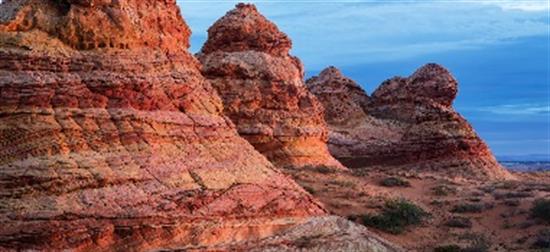NOTE: “Consider how far the Antiquities Act has strayed from its original intent: The act states that monument designations should be limited to “the smallest area compatible with proper care and management of the objects to be protected.” In recent years, however, it has been used as a large-scale conservation policy, dictated by presidential decree. Many recent monuments have comprised more than one million acres each.
“[A]n act that grants presidents such authority without Congress’ approval or local input should be viewed for what it truly is: an antiquated law.”
Time to Modernize the Antiquities Act
Flathead Beacon
Shawn Regan, Property and Environment Research Center (PERC)
May 24, 2017
https://goo.gl/ymoRwh
During his Senate confirmation hearing earlier this year, Interior Secretary Ryan Zinke said he is an “unapologetic admirer” of Teddy Roosevelt. But the former Montana congressman now finds himself tasked with reining in the very same executive powers Roosevelt created to set aside federal lands.
Last month, President Donald Trump signed an executive order instructing Zinke’s Interior Department to review national monuments recently created under the Antiquities Act of 1906. The law, signed by Roosevelt, allows presidents to unilaterally place federal lands off limits to development and other uses without local input or approval from Congress.
The act was created to protect small archaeological sites and other “antiquities” from looting or desecration. But in recent decades, it has been abused by presidents who have used its executive authority to set aside vast swaths of public land as national monuments, often in the final days of their administration. The review process presents an opportunity for Zinke to help reverse these abuses and encourage Congress to reform Roosevelt’s antiquated law.
Consider how far the Antiquities Act has strayed from its original intent: The act states that monument designations should be limited to “the smallest area compatible with proper care and management of the objects to be protected.” In recent years, however, it has been used as a large-scale conservation policy, dictated by presidential decree. Many recent monuments have comprised more than one million acres each.
President Barack Obama was especially fond of the act. He used it to create more national monuments than any other president, including the controversial 1.35 million-acre Bears Ears National Monument in Utah, which he designated at the end of his administration despite opposition by Utah’s legislature, governor, and the state’s entire congressional delegation, as well as local officials.
The act runs roughshod over the legislative process that is at the core of American governance, which seeks to promote compromise and coalition-building. In the case of Bears Ears, a multi-year legislative effort was underway in Utah to reach a “grand bargain” that would protect wilderness areas in the region while also opening other lands for resource development. But the effort was thwarted once Obama declared the Bears Ears monument.
The Antiquities Act can even corrode the democratic process and undermine comprise. After all, why would environmental groups come to the bargaining table in good faith when they can instead lobby the White House to single-handedly set aside land as monuments?
Zinke has an opportunity to begin reversing these abuses. His review will include 27 large monuments designated since 1996, including Bears Ears and the 377,000-acre Upper Missouri River Breaks National Monument in eastern Montana, created by President Clinton in 2011.
It is unclear whether Trump has the authority to rescind or shrink any monument designations without approval from Congress. The Antiquities Act does not explicitly state that presidents can unilaterally undo monument designations, although Congress has occasionally reduced the size of monuments in the past. Nonetheless, the review process could help clarify the scope of the law and lead to reforms that would allow for more accountability and local input.
Already, the process is encouraging more local input. Last week, Zinke announced that the public will be able to submit comments to the Department of the Interior after May 12 to provide input on any of the monuments under review. This stands in sharp contrast to the Antiquities Act, which requires no such public input.
Zinke should reject Roosevelt’s legacy of conservation-by-presidential-decree in favor of an approach that requires local input and congressional approval. At a time when Americans on both sides of the political aisle are growing increasingly wary of the expansion of executive powers, an act that grants presidents such authority without Congress’ approval or local input should be viewed for what it truly is: an antiquated law.
Shawn Regan is a research fellow at the Property and Environment Research Center (PERC) in Bozeman.

